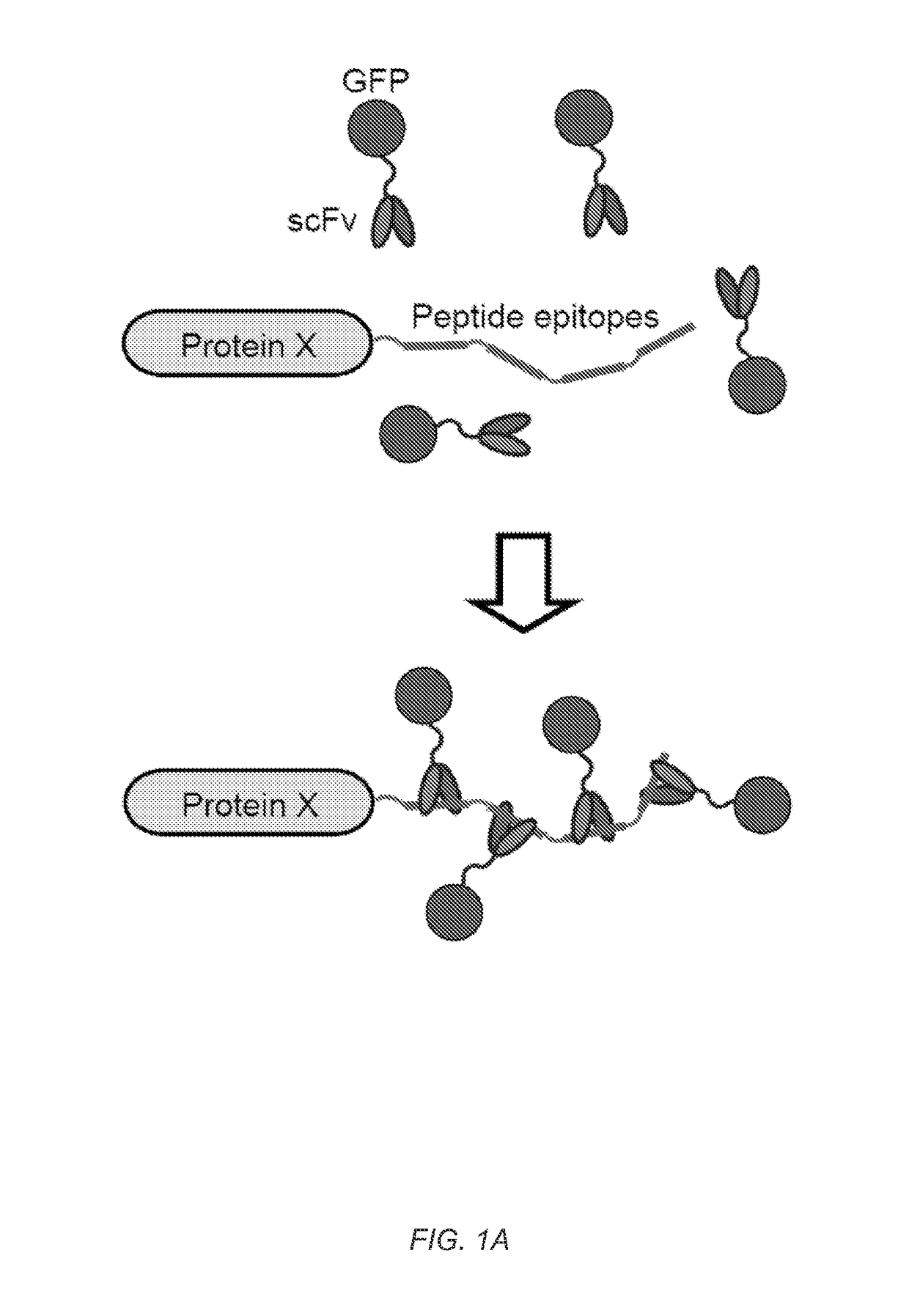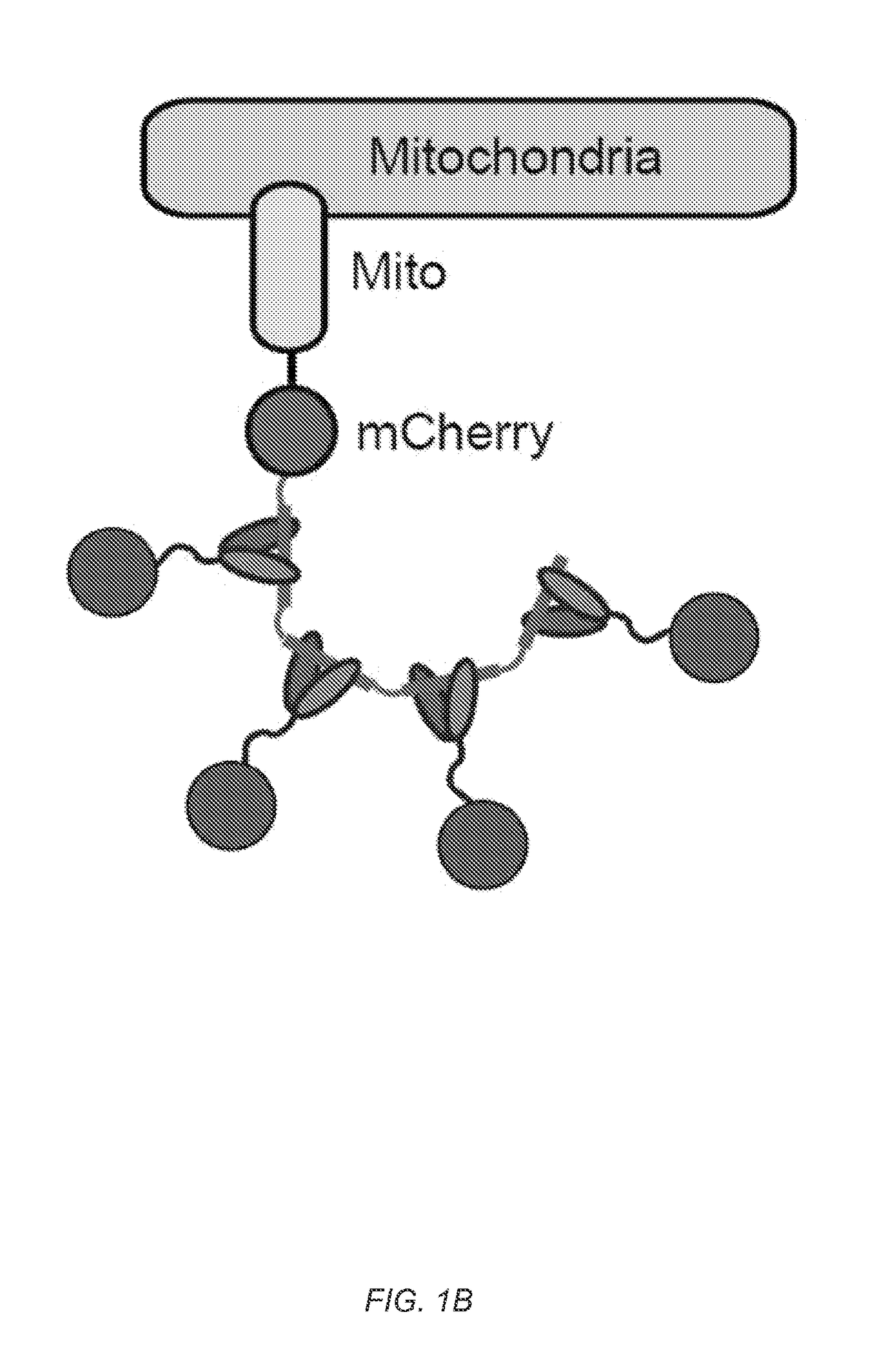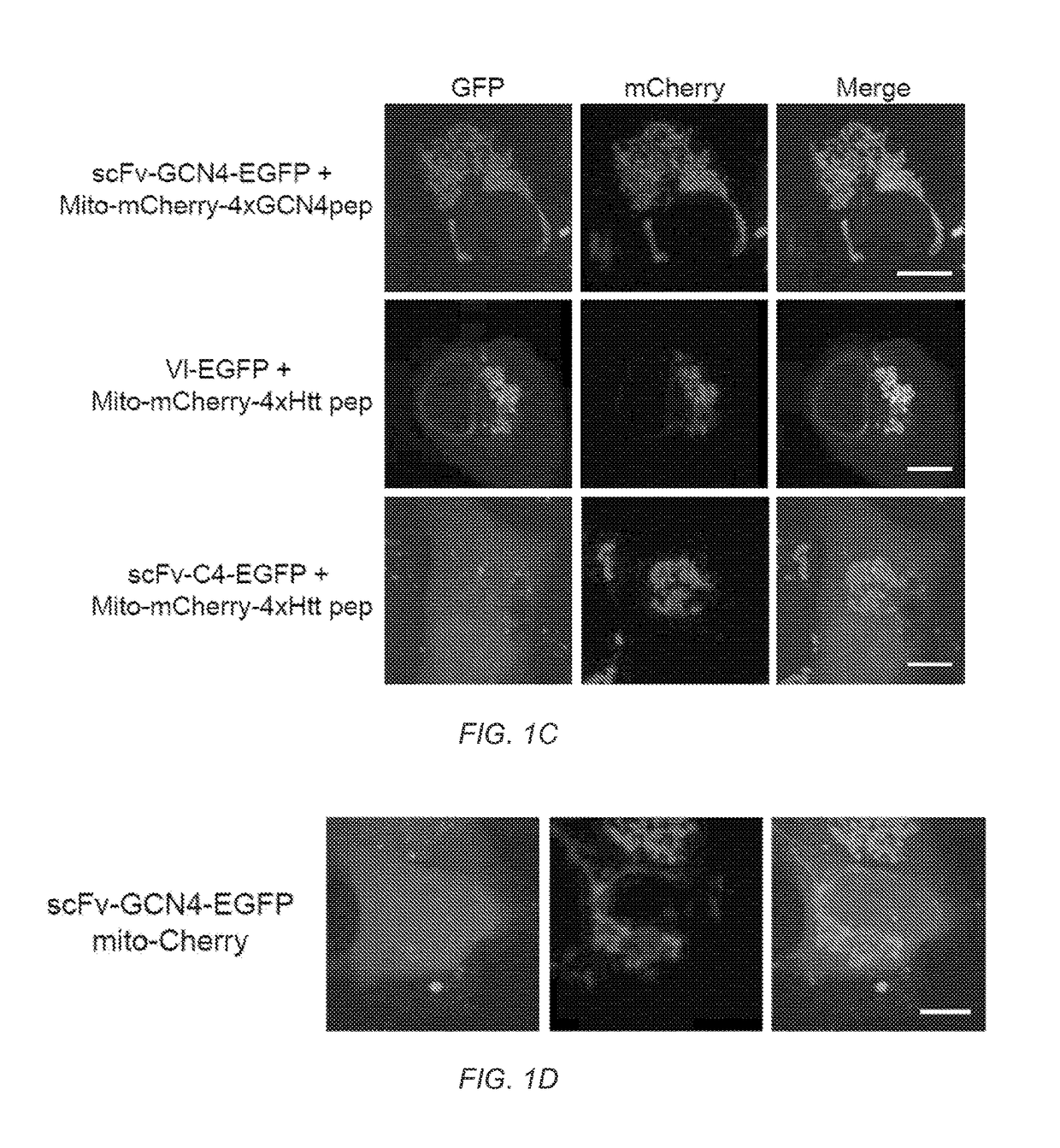A protein tagging system for in vivo single molecule imaging and control of gene transcription
a single molecule, protein tagging technology, applied in the direction of fluorescence/phosphorescence, immunoglobulins, peptides, etc., can solve the problems of insufficient sensitivity and/or specificity
- Summary
- Abstract
- Description
- Claims
- Application Information
AI Technical Summary
Benefits of technology
Problems solved by technology
Method used
Image
Examples
example 1
Introduction
[0125]Signal amplification is important for many biological processes as well as bioengineering applications. Outputs from transcriptional and signaling pathways can be amplified by recruiting multiple copies of regulatory proteins to a site of action. Taking advantage of this principle, we have developed a novel protein scaffold (a repeating peptide array termed SunTag) that can recruit multiple copies of an antibody-fusion protein. We show that the SunTag can be used to recruit a variety of proteins to the protein scaffold, including GFP, which allows tagging of a single protein molecule with up to 24 copies of GFP, thereby enabling long-term imaging of single protein molecules in living cells. We also used the SunTag to create a potent synthetic transcription factor by recruiting multiple copies of a transcriptional activation domain to a modified CRISPR / Cas9 protein and demonstrate strong activation of endogenous gene expression with this system. Thus, SunTag provide...
PUM
| Property | Measurement | Unit |
|---|---|---|
| Length | aaaaa | aaaaa |
| Fluorescence | aaaaa | aaaaa |
| Affinity | aaaaa | aaaaa |
Abstract
Description
Claims
Application Information
 Login to View More
Login to View More - R&D
- Intellectual Property
- Life Sciences
- Materials
- Tech Scout
- Unparalleled Data Quality
- Higher Quality Content
- 60% Fewer Hallucinations
Browse by: Latest US Patents, China's latest patents, Technical Efficacy Thesaurus, Application Domain, Technology Topic, Popular Technical Reports.
© 2025 PatSnap. All rights reserved.Legal|Privacy policy|Modern Slavery Act Transparency Statement|Sitemap|About US| Contact US: help@patsnap.com



